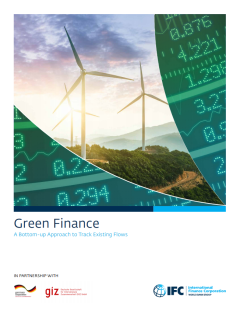
If we are to transition to a sustainable global economy, we need to scale up the financing of investments that provide environmental benefits, known as “green finance". Various financial institutions, international initiatives, standard setters, and regulatory bodies have developed their own approaches to green finance. The diversity of approaches and definitions across the financial sector makes it difficult to assess overall progress. This is further constrained by data availability, which limits the rigour of the analysis of existing green finance flows.
Green Finance: A bottom-up approach to track existing flows seeks to provide methodologies for tracking flows that are aligned with much needed concrete definitions proposed at the project-level. This analysis lends support to the activities proposed under the recent “Roadmap for a Sustainable Financial System” launched by UN Environment and the World Bank Group, which intends to design an action plan for moving towards a sustainable financial system and a basis for measuring progress.
This report presents analytical results for the banking sector, green bonds, and institutional investors, concluding that while development and tracking of green finance activities is gaining momentum, current data availability limits analytical rigor of existing flows.
Additional findings show that the green bond market represents the most advanced use of definitions and tracking in the field of green finance and could serve as an example for other areas. Tracking green finance will become become much easier and more accurate when bank lending and project purposes can be clearly labeled as green based on consistent classifications. The report finally outlines key action points for market players both in the short and medium term, with the goal of enhancing cooperation and building a foundational roadmap for a stronger, more integrated green finance sector.
